Walmart Pestel Analysis Overview
In the fiercely competitive world of global retail, few names carry as much weight as Walmart. Its enduring success in the face of ever-changing market dynamics is a testament to its adaptability and strategic prowess.
To explore the main factors that impact positively or negatively the growth and the sustainability of Walmart, we present our comprehensive “Walmart Pestel analysis.”
This article will help you discover the critical factors shaping Walmart’s achievements and understand the dynamic forces driving the retail giant’s continued success.
Political Factors
The international political environment can impact Walmart’s growth and sustainability in both positive and negative ways.
Positive impacts:
Free trade agreements:
Free trade agreements can reduce tariffs and other barriers to trade, which can make it easier and cheaper for Walmart to import and export goods. This can lead to lower prices for consumers and higher profits for Walmart.
For example, Walmart has benefited from trade agreements such as the North American Free Trade Agreement (NAFTA), which has reduced tariffs and other barriers to trade between the United States, Canada, and Mexico.
Government support for foreign investment:
Some governments offer financial incentives or other support to foreign companies like Walmart that invest in their countries. This can help Walmart to expand into new emerging markets and grow its business.
Political stability: Political stability in most countries where Walmart operates can create a more favorable business environment. This can lead to increased investment and job creation by Walmart.
Negative impacts:
Trade wars:
Trade wars can lead to higher tariffs and other barriers to trade, which can make it more difficult and expensive for Walmart to import and export goods. This can lead to higher prices for consumers and lower profits for Walmart.
Political instability:
Political instability in some countries where Walmart operates can lead to disruptions to its business, such as looting, protests, and strikes. This can damage Walmart’s reputation and hurt its bottom line.
Government regulations:
Governments can impose regulations on businesses, such as minimum wage laws, environmental regulations, and labor standards. These regulations can increase Walmart’s costs and make it more difficult to operate.
Overall, the impact of the international political environment on Walmart’s growth and sustainability will depend on a variety of factors, including the specific policies of the governments in the countries where Walmart operates. However, the international political environment can have a significant impact on Walmart’s business.
In the coming years, some of the key international political factors that could impact Walmart’s growth and sustainability include:
- The ongoing trade war between the United States and China
- The political instability in Europe due to the war in Ukraine
- The rise of populism and nationalism in many countries
- The increasing focus on environmental regulations
- The growing importance of digital trade
Walmart will need to carefully survey these and other international political developments and adjust its business strategy accordingly in order to maintain its growth and expansion in the future years.
Economic factors
The international economic climate can impact Walmart’s growth and expansion in both positive and negative forms.
Positive effects:
Recession:
During a recession, consumers are more likely to shop at discount retailers like Walmart as they look for ways to save money. This can lead to increased sales and profits for Walmart.
For instance, the COVID-19 crisis has impacted Walmart’s growth and bottom line. The pandemic has accelerated the shift to online shopping, which is a positive trend for Walmart.
Unemployment:
When unemployment is high, consumers have less disposable income to spend. This can lead to increased sales of essential items, such as food and groceries, at Walmart.
Exchange rates:
If the value of the US dollar declines relative to other currencies, it can make Walmart’s products more affordable for international consumers. This can lead to increased sales in Walmart’s international markets.
Negative effects:
Inflation:
Inflation can increase the cost of goods and services for Walmart, which can lead to lower profits.
Recession:
A recession can also lead to decreased consumer spending, which can hurt Walmart’s sales. For example, the COVID-19 pandemic has led to increased inflation and supply chain disruptions, which are challenges for Walmart.
Unemployment:
If unemployment is high, it can lead to social unrest and political instability, which can disrupt Walmart’s business operations.
Exchange rates:
If the value of the US dollar increases relative to other currencies, it can make Walmart’s products more expensive for international consumers. This can lead to decreased sales in Walmart’s international markets.
Overall, Walmart is well-positioned to weather the ongoing challenges of the COVID-19 pandemic. The company has a strong financial position and a loyal customer base. Walmart is also investing heavily in its e-commerce business, which is poised for continued growth.
In the coming years, some of the key international economic factors that could impact Walmart’s growth and durability include:
- The ongoing recovery from the COVID-19 pandemic
- The rising cost of living in many countries
- The impact of climate change on global supply chains
- The increasing importance of digital commerce
As a result, we can suggest the following actions to Walmart executives:
- Invest in its e-commerce operations to meet the growing demand for online shopping.
- Expand its presence in emerging markets, like Turkey, India, Indonesia, and Brazil, where there is still significant growth potential.
- Focus on selling essential items, such as food and groceries, which are less likely to be impacted by economic downturns.
- Develop new strategies to manage costs and maintain its competitive advantage.
Social factors
The global social and cultural landscape can exert both positive and negative influences on Walmart’s growth and expansion in the forthcoming years.
Positive impacts:
Growing middle class:
The growing middle class in many countries is creating a new market for Walmart’s products and services. For instance, Walmart has been successful in expanding into Mexico, where the growing middle class is creating a new market for its products and services.
Changing customer habits:
Consumers in many countries are becoming more price-conscious and value-oriented, which is driving demand for Walmart’s products.
For example, Walmart has been prosperous in extending into China, where consumers are becoming more price-conscious and value-oriented.
Digital natives:
Digital natives are a generation of consumers who have grown up with digital technology. They are more likely to shop online and are more open to new and innovative retail experiences.
This presents an opportunity for Walmart to expand its e-commerce business and reach new customers.
Globalization:
Globalization is leading to the spread of Western culture and lifestyles to other parts of the world. This is creating a demand for Walmart’s products and services in new markets.
Negative impacts:
Cultural differences:
Walmart has faced challenges in some countries due to cultural differences. For example, in some countries, Walmart has been criticized for its labor practices and its impact on local businesses.
For example, Walmart has faced challenges in expanding into India, where cultural differences have made it difficult for the company to connect with local consumers.
Local competition:
Walmart faces competition from local retailers in many countries. These local retailers may have a better understanding of the local market and culture, which can give them an advantage over Walmart.
Rising social unrest:
Rising social unrest in some countries can disrupt Walmart’s business operations. For example, Walmart has been forced to close stores in some countries due to protests and riots.
According to our expectations, some of the critical international social and cultural elements that could influence Walmart’s growth and durability in the coming years include:
- The increasing impact of social media on consumer behavior;
- The changing customer habits of consumers in many countries;
- The rise of digital natives;
To neutralize the negative effects of these aspects, we suggest that Walmart managers:
- Invest in research and development to better understand the social and cultural dynamics of the markets in which it operates.
- Partner with local retailers to gain access to their knowledge of the local market and culture.
- Adapt its product offerings and marketing strategies to meet the needs of local consumers.
- Use social media to connect with consumers and build relationships with them.
Technological factors
The international technological environment, such as artificial intelligence (AI) and other factors, is expected to have a significant impact on the growth and sustainability of Walmart in the coming years.
Positive impacts:
AI: AI can help Walmart to improve its operations in a number of ways, such as:
- Predicting demand: AI can help Walmart predict demand for products more accurately, which can lead to reduced inventory costs and improved customer satisfaction.
- Personalizing the customer experience: AI can help Walmart to personalize the customer experience by recommending products and services that are relevant to each customer.
- Automating tasks: AI can help automate tasks such as order fulfillment and customer service, which can reduce costs and improve efficiency.
Other technologies:
Other technologies, such as blockchain and robotics, can also help Walmart improve its operations and reduce costs. For example, blockchain can be used to improve the traceability of products and reduce fraud, while robotics can be used to automate tasks in Walmart’s warehouses and stores.
Negative impacts:
Disruption:
New technologies can disrupt existing business models and create new competitors. For example, the rise of e-commerce has disrupted the traditional brick-and-mortar retail sector.
Walmart needs to be prepared to adapt to new technologies and business models to remain competitive.
Cost:
New technologies can be expensive to implement and maintain. Walmart needs to invest carefully in new technologies in order to maximize the return on its investment.
To summarize, we think the impact of the international technological environment on Walmart’s expansion in the coming years is likely to be positive.
AI and other technologies can help Walmart to improve its operations, reduce costs, and personalize the customer experience.
However, Walmart needs to be prepared for the disruptive potential of new technologies and invest carefully in new technologies to maximize the return on its investment.
In terms of action to be taken, Walmart can focus on the following strategies to leverage technology for its growth and durability:
- Continue to invest in AI and other technologies to improve its operations, reduce costs, and personalize the customer experience.
- Develop new business models and products that leverage emerging technologies.
- Partner with technology companies to develop new products and services.
- Acquire technology companies to gain access to new technologies and expertise.
By taking these steps, Walmart can position itself for continued growth and success in the increasingly technological world.
Environmental factors
In the forthcoming years, worldwide ecological conditions are expected to exert a substantial influence on Walmart’s growth and sustainability.
Positive impacts:
Increased demand for sustainable products:
Consumers are becoming more aware of the environmental impact of their purchases and are increasingly demanding sustainable products. Walmart can capitalize on this trend by expanding its offerings of sustainable products.
Government incentives for sustainable businesses:
Many governments are offering incentives to businesses that adopt sustainable practices. Walmart can benefit from these incentives by investing in renewable energy, reducing waste, and improving its supply chain efficiency.
According to Walmart’s management, the company has already taken steps to reduce its environmental impact. For example, Walmart has set a goal of becoming 100% renewable energy by 2035.
Walmart is also working to reduce its waste and improve its supply chain efficiency. For instance, Walmart has set a goal of diverting all of its waste from landfills by 2025.
Negative impacts:
Increased costs:
Complying with environmental regulations and investing in sustainable practices can increase costs for Walmart.
Supply chain disruptions:
Climate change and other environmental elements can disrupt Walmart’s supply chain, making it more difficult and expensive to source goods.
Damage to reputation:
If Walmart is perceived as not being environmentally friendly, it could damage its reputation and hurt its sales.
Overall, the impact of the international ecological environment on Walmart’s growth and durability in the coming years is probable to be blended. Walmart can capitalize on the growing demand for sustainable products and benefit from government incentives for sustainable businesses.
However, Walmart needs to be prepared for the increased costs and supply chain disruptions that could result from climate change and other environmental factors.
In the coming years, Walmart can focus on the following plans to mitigate the negative impacts and enhance the positive impacts of the international ecological circumstances:
- Continue to invest in renewable energy, reduce waste, and improve its supply chain efficiency to reduce its environmental impact.
- Expand its offerings of sustainable products to meet the growing demand from consumers.
- Partner with suppliers to reduce the environmental impact of its supply chain.
- Educate consumers about the environmental impact of their purchases and how they can make more sustainable choices.
- Support public policies that promote environmental sustainability.
By taking these steps, Walmart can position itself for continued growth and success in the increasingly environmentally conscious world.
Legal factors
The international legal environment can impact the growth and expansion of Walmart in a number of ways.
Positive impacts:
Investor protection laws:
Investor protection laws can help to reduce the risk of Walmart’s investments in foreign countries. This can encourage Walmart to invest more in foreign markets, which can lead to growth and expansion.
For instance, Walmart has benefited from investor protection laws in countries such as China, which have helped to reduce the risk of Walmart’s investments in those countries.
Intellectual property laws:
Intellectual property laws can protect Walmart’s trademarks and other intellectual property in foreign countries. This can help Walmart to maintain its competitive advantage and grow its business in foreign markets.
Negative impacts:
Antitrust laws:
Antitrust laws can restrict Walmart’s ability to grow and expand in foreign markets. For example, antitrust laws may prevent Walmart from acquiring local competitors or opening a certain number of stores in a particular area.
For example, Walmart was forced to sell some of its stores in Germany in order to comply with antitrust laws.
Environmental regulations:
Environmental regulations can increase the cost of doing business for Walmart in foreign countries. For example, Walmart may be required to invest in pollution control equipment or use renewable energy sources.
Labor laws:
Labor laws can increase the cost of labor for Walmart in foreign countries. For example, Walmart may be required to pay its employees higher wages or provide them with more benefits.
In the coming years, We suggest that Walmart focus on the following strategies to avoid the negative impacts and enhance the positive impacts of the international legal environment:
- Carefully assess the legal environment in foreign countries before investing or expanding.
- Work with governments and other stakeholders to promote trade and investment.
- Advocate for fair and transparent antitrust laws.
- Comply with all applicable environmental and labor laws.
Walmart Pestel Analysis Summary
To summarize the results of Walmart Pestel analysis, we present the main opportunities and threats related to the macro environment of this company.
The table below summarizes the key opportunities and threats associated with each component of Walmart’s PESTEL analysis, as discussed in the article.
| Components | Opportunities | Threats |
|---|---|---|
| Political Environment | – Free trade agreements reduce tariffs and boost imports/exports.
– Government support encourages expansion. – Political stability leads to more investment and job creation. | – Trade wars increase tariffs and trade barriers.
– Political instability leads to business disruptions. – Government regulations increase costs and complexity. |
| Economic Environment | – Recessions drive consumers to discount retailers.
– High unemployment can boost sales of essential items. – Favorable exchange rates make products affordable abroad. | – Inflation raises costs for goods and services.
– Recessions reduce consumer spending. – High unemployment can lead to social unrest. – Unfavorable exchange rates reduce international sales. |
| Social Environment | The growing middle class creates new markets.
– Price-conscious consumers drive demand for value-oriented products. – Digital natives offer opportunities for e-commerce growth. – Globalization spreads Western culture, expanding markets. | – Cultural differences can pose challenges.
– Local competition with market knowledge can outperform. – Rising social unrest disrupts operations. |
| Technological Environment | – AI improves demand prediction, personalization, and automation.
– Technologies like blockchain and robotics enhance efficiency. | – Technological disruption challenges existing business models.
– Costly implementation and maintenance of new technologies. |
| Ecological Environment | – Increased demand for sustainable products.
– Government incentives for sustainable practices. | – Increased costs for compliance and sustainability.
– Supply chain disruptions due to climate change. – Damage to the reputation for not being environmentally friendly. |
| Legal Environment | – Investor protection laws reduce investment risks.
– Intellectual property laws protect trademarks. | – Antitrust laws may restrict growth.
– Environmental and labor laws increase business costs. |
Conclusion
In conclusion, this PESTEL analysis of Walmart has allowed us to deeply examine the macro factors of the retail industry on a global scale.
As a result, we can identify the main opportunities and threats that Walmart’s management should consider when planning strategically for the coming years.
While the Pestel framework is a relevant and effective strategic analysis framework, it must be complemented by other analyses if you want to well understand your business’s environment.
These include Michael Porter’s Five Forces model, which allows you to analyze your industry’s competitive intensity and degree of attractiveness, and the VRIO model, which examines your company’s resources and specific skills.
Hopefully, this example of Walmart Pestel analysis has helped you better understand the use and implementation of the Pestel framework in your company, don’t forget to share this article with your friends and family!
PESTEL analysis examples 2024
To better understand the PESTEL analysis, we invite you to read our recent free examples of the Pestel framework.
PESTEL analysis of Primark
Click here to read our example of Primark’s PESTEL analysis.
PESTEL analysis of Zara
Click here to read our example of Zara’s PESTEL analysis.
PESTEL analysis of DHL
Click here to read our example of DHL’s PESTEL analysis.
PESTEL analysis of FedEx
Click here to read our example of FedEx’s PESTEL analysis.
PESTEL analysis of Chipotle
Click here to read our example of Chipotle’s PESTEL analysis.
PESTEL analysis of Brazil
Click here to read our example of Pestel’s analysis of Brazil.
PESTEL analysis of Spotify
Click here to read our example of Spotify Pestel analysis.
Chick-fil-A PESTEL Analysis
Click here to read our example of Chick-fil-A Pestel analysis.
Costco PESTEL Analysis
Click here to read our example of Costco Pestel analysis.
Microsoft PESTEL Analysis
Click here to read our example of Microsoft Pestel analysis.
Disney PESTEL Analysis
Click here to read our example of Disney Pestel analysis.
Airline Industry PESTEL Analysis
Click here to read our example of the Airline industry Pestel analysis.
Amazon Pestel Analysis
Click here to read our example of Amazon Pestel analysis.
McDonald’s Pestel Analysis
Click here to read our example of the Netflix Pestel analysis.
Netflix Pestel Analysis
Click here to read our example of the Netflix Pestel analysis.
Apple Pestel Analysis
Click here to read our example of the Apple Pestel analysis.
Twitter Pestel Analysis
Click here to read our example of the Twitter Pestel analysis.
Facebook Pestel Analysis
Click here to read our example of the Facebook Pestel analysis.
Pestel analysis of the Social Media industry
Click here to read our example of the Pestel analysis of the Social Media industry.
Ikea Pestel Analysis
Click here to read our example of the IKEA Pestel analysis.
Tesla Pestel Analysis
Click here to read our example of the TESLA Pestel analysis.


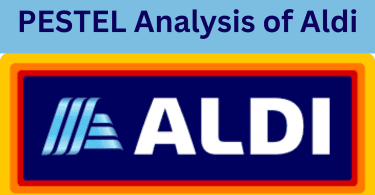
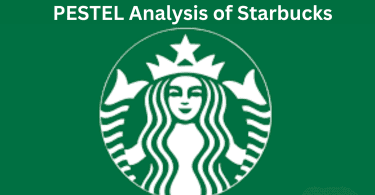
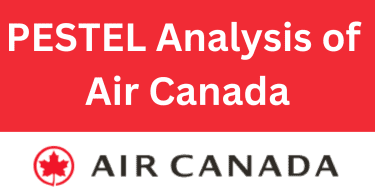
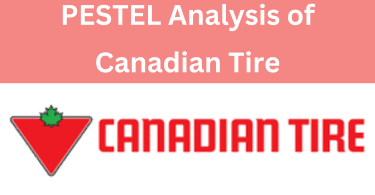



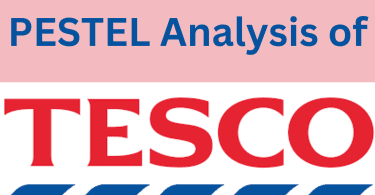
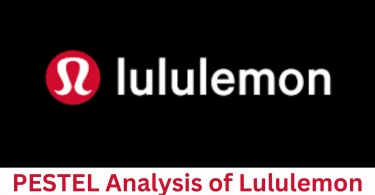
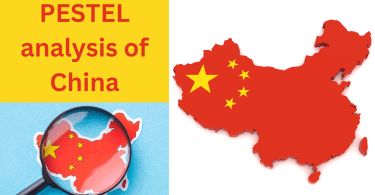
Leave a Comment